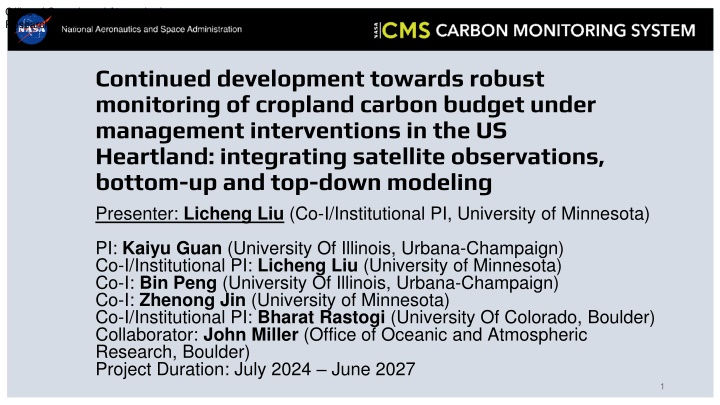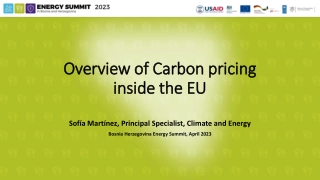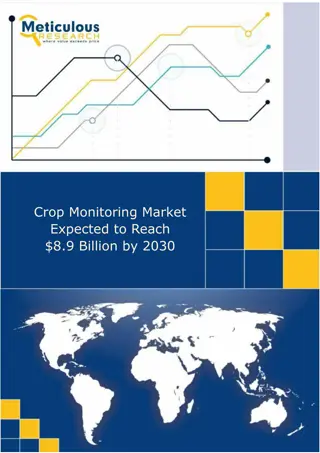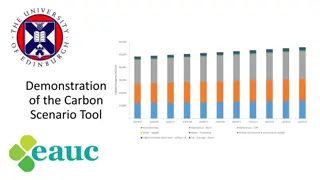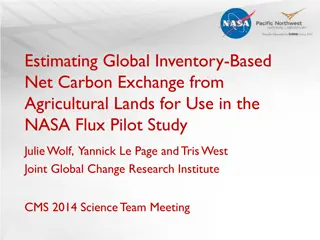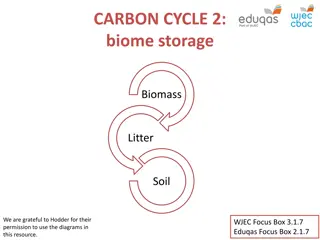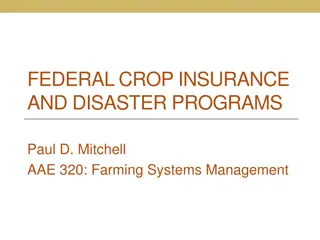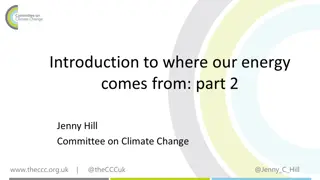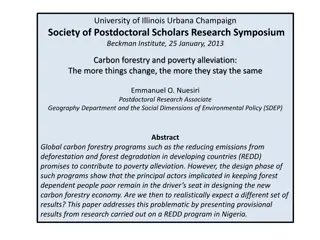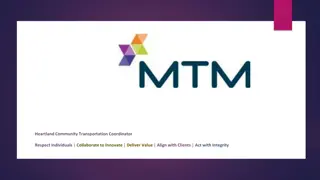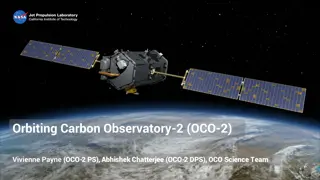Monitoring US Heartland Crop Carbon Budget
Continued development towards robust monitoring of cropland carbon budget under management interventions in the US Heartland, integrating satellite observations, bottom-up, and top-down modeling for effective climate mitigation strategies. The project aims to generate crop-related variables, quantify holistic carbon budget, refine crop NEE fine-resolution product, and disseminate information through collaboration with farmer organizations.
Download Presentation

Please find below an Image/Link to download the presentation.
The content on the website is provided AS IS for your information and personal use only. It may not be sold, licensed, or shared on other websites without obtaining consent from the author.If you encounter any issues during the download, it is possible that the publisher has removed the file from their server.
You are allowed to download the files provided on this website for personal or commercial use, subject to the condition that they are used lawfully. All files are the property of their respective owners.
The content on the website is provided AS IS for your information and personal use only. It may not be sold, licensed, or shared on other websites without obtaining consent from the author.
E N D
Presentation Transcript
Office of Oceanic and Atmospheric Research, Boulder Continued development towards robust monitoring of cropland carbon budget under management interventions in the US Heartland: integrating satellite observations, bottom-up and top-down modeling Presenter: Licheng Liu (Co-I/Institutional PI, University of Minnesota) PI: Kaiyu Guan (University Of Illinois, Urbana-Champaign) Co-I/Institutional PI: Licheng Liu (University of Minnesota) Co-I: Bin Peng (University Of Illinois, Urbana-Champaign) Co-I: Zhenong Jin (University of Minnesota) Co-I/Institutional PI: Bharat Rastogi (University Of Colorado, Boulder) Collaborator: John Miller (Office of Oceanic and Atmospheric Research, Boulder) Project Duration: July 2024 June 2027 1
Background The agricultural sector contributes up to 10% of the total US GHG emissions, 60% of which comes from farming practices; Crops are the dominant land cover over large parts of the U.S. Heartland Distribution of major crop types in the U.S. Heartland in 2021 (USDA Cropland Data Layer), and locations of all the flux tower sites that we have access to the data for different crops. Precise carbon monitoring is essential for developing effective climate mitigation strategies. 2
Overview of Planned Activities Task 1: Generate crop-related variables and farming management practice from different satellite Task 2: Bottom-up estimation: use AI-based Model-Data Fusion to quantify holistic carbon budget. Task 3: Top-down constraining: use high resolution regional atmospheric inversions and its flux reconciliation with bottom-up estimation to refine crop NEE fine-resolution product. Information dissemination through the collaboration of multiple farmer organizations 3
Connections to Synthesis Efforts and Past Projects Connection to CMS 2016: This project builds on the CMS 2016 work by expanding the geographic scope and incorporating more crop types and refined carbon monitoring techniques using AI- engaged MDF. CMS 2023: US Heartland, six main crops CMS 2016: US Corn-belt, two main crops Connection to Other CMS Projects: We will leverage existing and archived CMS products listed in the table to constrain non-crop flux in our approach. 4
Contribution to COP, IPCC, and Federal Assessments Engagement with Stakeholders Direct alignment with COP and IPCC goals on mitigating agricultural GHG emissions; Support for national and international assessments related to carbon monitoring and climate-smart agricultural practices; Contribution to NASA s strategic goals by utilizing satellite-based tools for improved carbon budget estimates; The project will provide critical data to inform carbon reduction strategies, influencing both federal policies (e.g., Farm Bill) and private- sector initiatives. Planned actions: Conduct workshops and advisory meetings with farmer organizations to share project insights. Develop a web-based visualization tool in collaboration with these farmer organizations to allow farmers to access carbon budget data. Continue collaboration with organizations such as AFBF for national-level policy discussions and dissemination of research findings. 5
